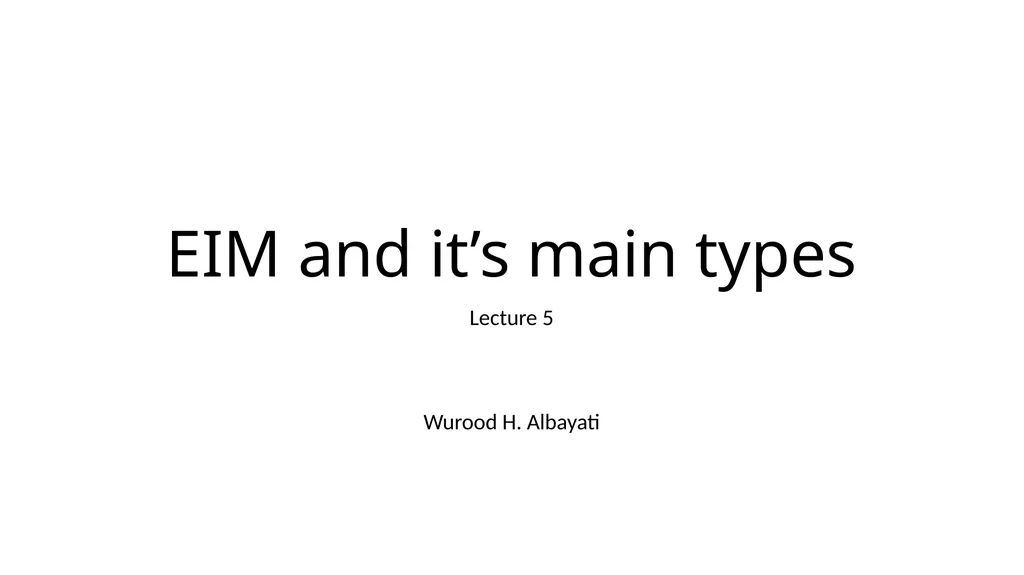EIM and it’s main types Lecture 5 Wurood H.
Author : celsa-spraggs | Published Date : 2025-05-28
Description: EIM and its main types Lecture 5 Wurood H Albayati Enterprise Risk Management ERM Enterprise Risk Management ERM may be defined as a process effected by a Board of Directors management and other personnel applied in strategy
Presentation Embed Code
Download Presentation
Download
Presentation The PPT/PDF document
"EIM and it’s main types Lecture 5 Wurood H." is the property of its rightful owner.
Permission is granted to download and print the materials on this website for personal, non-commercial use only,
and to display it on your personal computer provided you do not modify the materials and that you retain all
copyright notices contained in the materials. By downloading content from our website, you accept the terms of
this agreement.
Transcript:EIM and it’s main types Lecture 5 Wurood H.:
EIM and it’s main types Lecture 5 Wurood H. Albayati Enterprise Risk Management (ERM) Enterprise Risk Management (ERM) may be defined as a process, effected by a Board of Directors, management and other personnel, applied in strategy setting and across the enterprise, designed to identify potential events that may affect the Enterprise, to provide reasonable assurance regarding the achievement of Enterprise objectives. BPA gives substantial benefits to enterprises. However, it should be noted that it does have some inherent risks which should be understood. The risks are classified below: Input & Access: All input transaction data may not be accurate, complete and authorized. File & Data Transmission: All files and data transmitted may not be processed accurately and completely, due to network error. Data: Master data and transaction data may be changed by unauthorized personnel due to weak access control. Processing: Valid input data may not have been processed accurately and completely due to program error or bugs. Output: Is not complete and accurate due to program error or bugs and is distributed to unauthorized personnel due to weak access control. Infrastructure: All data & programs could be lost if there is no proper backup in the event of a disaster and the business could come to a standstill. Financial & accounting system Every accounting systems stores data in two ways: Master Data and Non-Master Data (or Transaction Data) as shown in the Fig. Master Data: Relatively permanent data not expected to change frequently ( e.g. employee name, account no., …etc). Non-Master Data: Non-permanent data and expected to change frequently( the amount of money, student degree, quantity of a material in store, …etc.). Front End & Back End These two words are used by software people again and again. Let us understand these two words in a simple language. Front End – It is part of the overall software which actually interacts with the user who is using the software. Back End – It is a part of the overall software which does not directly interact with the user, but interact with Front End only. A Non-Integrated System is a system of maintaining data in a decentralized way. Each department in an enterprise shall maintain its own data separately and not in an integrated way. This is the major problem with non-integrated systems. The problems that could occurs in non integrated system are: Communication Gaps Mismatched Data Communication between different














